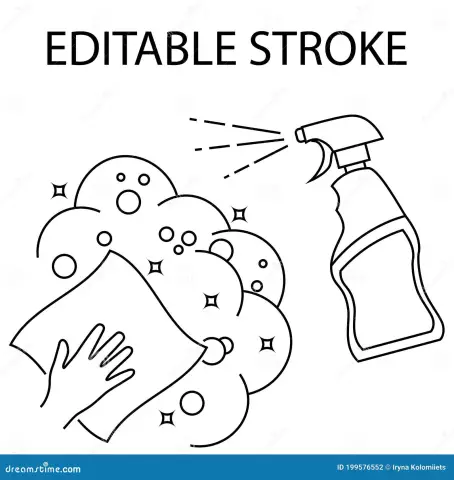- Author Rachel Wainwright [email protected].
- Public 2023-12-15 07:39.
- Last modified 2025-11-02 20:14.
Disinfection of premises

The term "disinfection" is used to mean the elimination of infection and the establishment of a sterility regime. Disinfection of premises means that special measures are taken to get rid of the microorganisms that are there as completely as possible. Is there a need to disinfect all rooms? Of course no. Typically, damp cleaning and ventilation is sufficient to maintain the required level of cleanliness in the room. Disinfection of premises is only necessary in special cases.
One of them is when the room was known to be infected, for example, if there is or was a person with an infectious disease, especially if this disease has a high degree of contagiousness, that is, infectiousness. It is constantly necessary to disinfect special premises. So, very thoroughly disinfect premises in medical institutions, especially those where people are especially vulnerable from the point of view of infection. As an example, we can cite operating rooms, or rooms for patients with blood oncological diseases - since both the diseases themselves and their treatment at a certain stage are associated with suppression of the immune system.
Disinfection of premises is carried out in several ways: chemical, physical, mechanical, or a combination of these.
Mechanical disinfection includes thorough wet cleaning, and in this case it is usually used in combination with a chemical method, since active chemical compounds and antiseptics are used to ensure the most complete removal of microorganisms, which are added to the water. Also, mechanical disinfection of the room includes air filtration with special filters called HEPA filters. They allow you to remove the smallest particles of dust, microbes and their waste products from the air.
Chemical disinfection is the treatment of a room with antiseptic preparations that have a detrimental effect on microorganisms. These include chlorine compounds, carbolic acid solution, phenols and other drugs.
Of the physical methods of disinfection of premises, quartzing is actively used - a special mode of ultraviolet radiation, in which ozone is formed, which is toxic to microorganisms.
When disinfecting premises, one should take into account the fact that quartzization, as well as active chemical compounds, are harmful not only to bacteria, but also to the person himself. Therefore, precautions should be taken when in contact with antiseptic agents for treating premises, and turn on the quartz lamp when there are no people in the room. After quartzing, it is advisable to ventilate the room, eliminating excess ozone.
Found a mistake in the text? Select it and press Ctrl + Enter.






